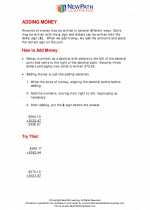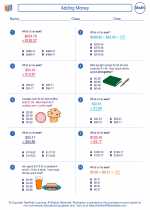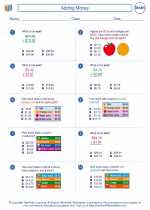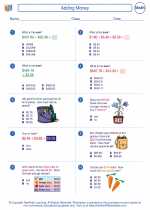Angles
An angle is formed when two rays share a common endpoint, called the vertex. Angles are measured in degrees and are used to describe the amount of rotation between the two rays.
Types of Angles
There are several types of angles:
- Acute Angle: An angle that measures less than 90 degrees.
- Right Angle: An angle that measures exactly 90 degrees.
- Obtuse Angle: An angle that measures more than 90 degrees but less than 180 degrees.
- Straight Angle: An angle that measures exactly 180 degrees, forming a straight line.
- Reflex Angle: An angle that measures more than 180 degrees but less than 360 degrees.
Measuring Angles
Angles are measured using a protractor, which is a tool with a semicircular shape and degree markings. To measure an angle:
- Place the center of the protractor over the vertex of the angle.
- Align one of the rays with the zero mark on the protractor.
- Read the number where the other ray intersects the protractor to determine the angle measurement.
Angles in Shapes
Angles are also commonly found in geometric shapes. For example:
- In a triangle, the three angles add up to 180 degrees.
- In a quadrilateral, the four angles add up to 360 degrees.
- In a circle, the angle formed by two radii at the center is always 90 degrees, and the angle at the circumference is half the angle at the center.
Understanding angles is important in various mathematical and real-world applications, such as geometry, architecture, and engineering.
Hopefully, this explanation helps you understand the concept of angles!
[Angles] Related Worksheets and Study Guides:
.◂Math Worksheets and Study Guides Third Grade. Adding Money
Study Guide Adding Money
Adding Money  Worksheet/Answer key
Worksheet/Answer key Adding Money
Adding Money  Worksheet/Answer key
Worksheet/Answer key Adding Money
Adding Money  Worksheet/Answer key
Worksheet/Answer key Adding Money
Adding Money  Worksheet/Answer key
Worksheet/Answer key Adding Money
Adding Money 

 Worksheet/Answer key
Worksheet/Answer key
 Worksheet/Answer key
Worksheet/Answer key
 Worksheet/Answer key
Worksheet/Answer key
 Worksheet/Answer key
Worksheet/Answer key

Create And Print more Adding Money worksheets with Adding Money Worksheets generator
The resources above cover the following skills:
Algebra (NCTM)
Use mathematical models to represent and understand quantitative relationships.
Model problem situations with objects and use representations such as graphs, tables, and equations to draw conclusions.